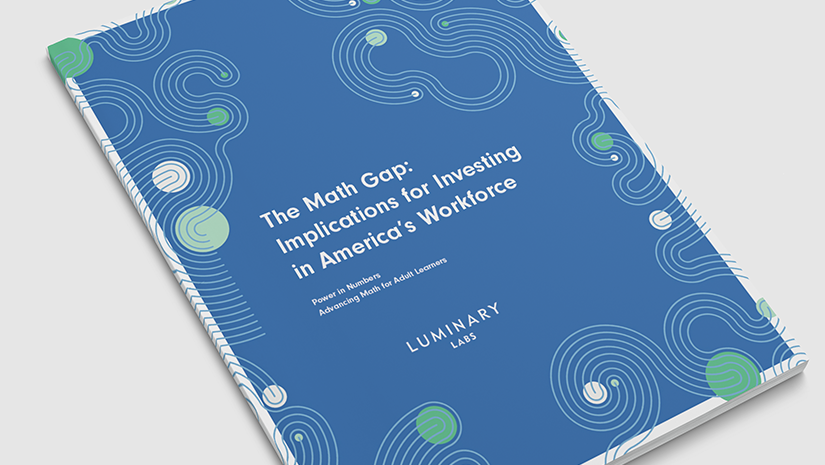Reskilling adults for the workforce is top of mind for many Americans and policymakers alike. In many ways, adult learners are the “new normal” student, and yet there is relatively little learning technology, course material, and educator support tailored to adult education.
When we attended the Coalition on Adult Basic Education (COABE) conference in May, this resource gap was all too apparent. We joined many sessions where educators shared their tactics for addressing day-to-day challenges in adult education, from boosting class attendance to adapting content for the adult learner. Simple solutions — such as starting a class Facebook group to create a regular communication channel — can have a true impact on outcomes. So what’s next?
When tackling messy problems, it’s tempting to look for a “big fix” from the next transformative technology. But in adult education, no single intervention will be the silver bullet. Technology is not a cure-all solution for complex issues around funding, degree pathways, and teacher preparation in adult education, but it can play a key role in addressing challenges like access, resourcing, and contextualization.
Our work on behalf of the U.S. Department of Education on Power in Numbers is exploring how technology solutions can meet adult learner needs to improve math skills acquisition. In collaboration with the project’s expert advisors, our Luminary Labs Power in Numbers team recently published the first of three research reports. The Math Gap: Implications for Investing in America’s Workforce analyzes the key stakeholders in adult math — employers, learners, and educators — and makes the case for using low-cost, high-quality open educational resources (OER).
Here are four powerful findings from our research. To learn more, download the full report (PDF).
- The math gap: Already by 2004, more than 40% of skilled blue collar employees reported using advanced math on the job, and 94% of all jobs require some math skills. Meanwhile, more than a third of adults in the United States have low math skills.
- The adult skills gap: A 2013 Lumina / Gallup poll found that 38% of Americans without a postsecondary credential say they are likely to go back to school for a college degree or certificate. And there is little time to waste: The Manufacturing Institute estimates that two million advanced manufacturing jobs will go unfilled by 2025 due to the skills gap.
- Industry’s role: By some calculations, the shelf life of the average in-demand skill is now less than five years. One study found that while 96% of educators believe they are delivering workforce-ready students, only 11% of U.S. employers agree. The bottom line: Businesses need to be part of the skills conversation.
- Tech in the classroom: Adult ed administrators and educators alike are excited about technology’s potential, and eager to experiment with new solutions in the classroom. When using OER specifically, 93% of educators saw equivalent or better learning outcomes across studies of 17,000 students.
Don’t miss the next two reports. To receive Power in Numbers updates, sign up for the project newsletter.

